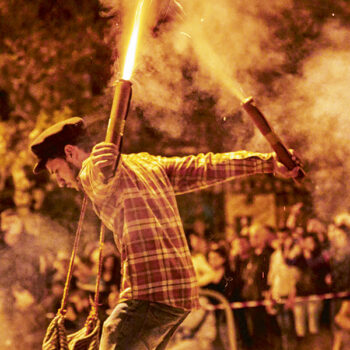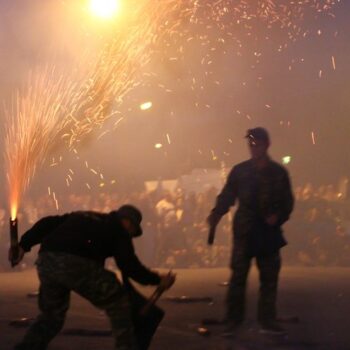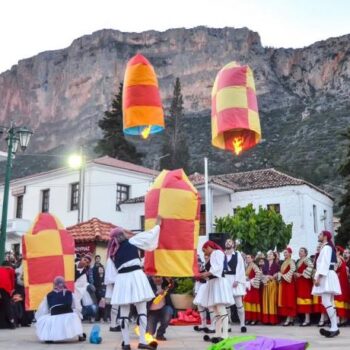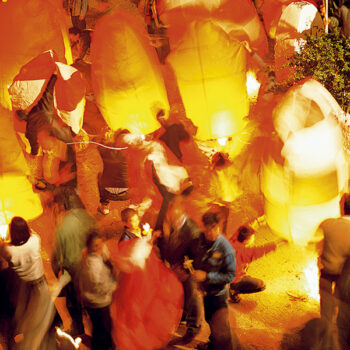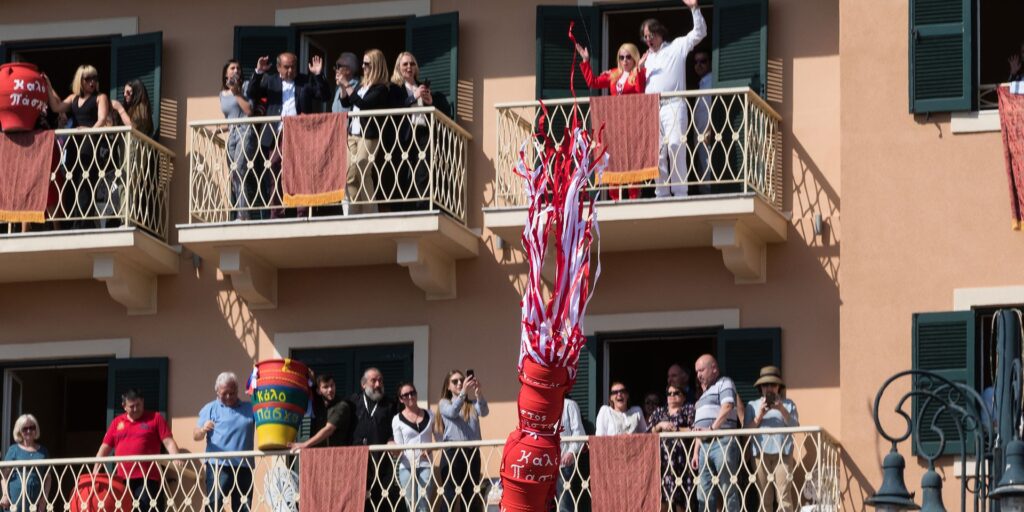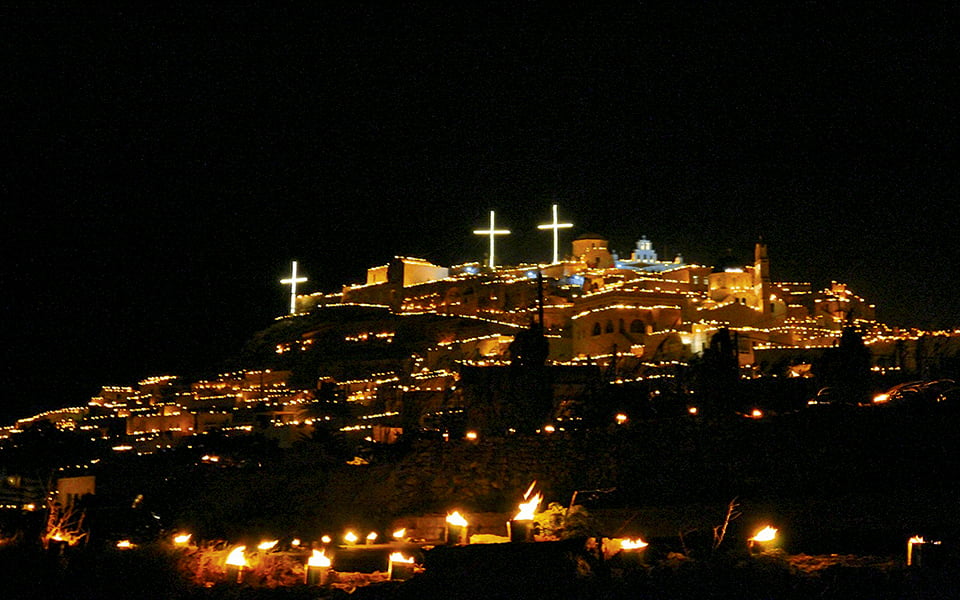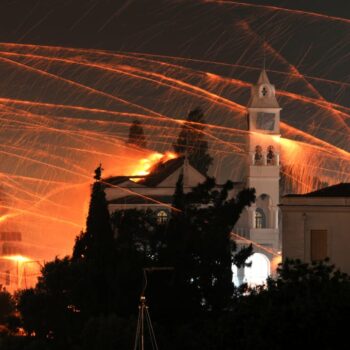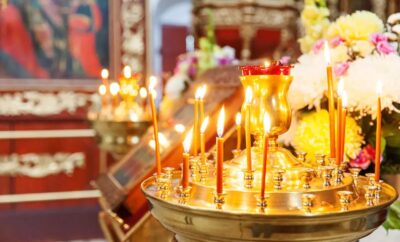Unique Greek Easter Customs
Spending your Easter in Greece can be a uniquely fantastic experience, filled with cultural and social events and Greek customs, plenty of delicious food and festivities, and a very colourful and vibrant vibe in the air.
Kalamata: Saitopolemos (fire dance)
In the southern Peloponnesian city of Kalamata, the ‘Saitopolemos’ is a truly spectacular custom. It involves about seven groups of about 15 and 30 people, some wearing traditional costumes. They light up the ‘saites’, long cardboard tubes filled with gunpowder, at Kalamata Municipal Stadium on Easter Sunday. It is said that the custom dates back to the era of Ottoman rule, when Greek independence fighters created saites as makeshift weapons to resist Ottoman cavalry. Saites, are prepared months in advance, and lit after the late-night Great Saturday Resurrection service as well as on Easter Sunday. They offer a colourful and culturally interesting spectacle!
Leonidio: Air Balloons
In the eastern Peloponnesian seaside town of Leonidio, about 500 air balloons are released into the sky from the town’s four parish churches. This is in keeping with a custom that has held strong since the late 19th century. The merry sound of chiming bells accompanies the multicolored air balloons as they ascend and drift apart high in the sky. The preparations for this custom usually start in January of each year and, quite often, children are taught how to make the balloons at school. Moreover, locals decorate the town’s darker streets with about 2,000 to 3,000 hollowed-out bitter oranges, creating a holy ambience by placing little candles inside.
Corfu: Clay Pot-smashing
This custom can be traced back to the period of Venetian rule on this picturesque Ionian Sea island. It is also said to be linked to the biblical verse “You will dash them to pieces like pottery” (Psalm 2:9). Towards the end of the first Resurrection church service, at around noon on the Great Saturday, locals hurl clay pots from their balconies, onto the street below. The pots are adorned with red ribbons and filled with water to make even louder crashing sounds. This is followed by musical processions led by the island’s renowned brass bands, which typically perform a marching song, “Fear Not, Greeks.”!
Santorini: Pyrgos on fire
On Good Friday, Pyrgos, a village perched on one of Santorini’s most elevated spots, is filled with lanterns virtually everywhere – the castle, rooftops, church domes and along paths and wall tops – to create a bright stream of light through which the ‘Epitaphios’ procession passes. Children light the lanterns by jumping from rooftop to rooftop in order to light them all, and housewives sprinkle the ‘Epitaphios’ with rosewater or perfume as it passes by. From a distance, the hilltop village looks like a brightly lit ship or a castle on fire!
Chios: rocket wars
The traditional ‘rocket war’ in Chios is a real feast for your eyes and senses. This custom, believed to have begun during the Ottoman rule, revives every year on the night of the Resurrection on the Great Saturday. A proper ‘battle’ is put on, between the two parishes of the village of Vrontados: Agios Markos and Panagia (Virgin Mary) Erythiani. From early afternoon until late at night, thousands of rockets are fired, creating an extraordinary spectacle illuminating the night sky.
Easter in Greece can be a truly fantastic experience, filled with
- cultural and social events,
- plenty of delicious food and festivities,
- unique local Greek Easter customs and traditions, and
- a very colourful and vibrant vibe in the air.
If you would like to know more, arrange a trip during the next Easter season or find out how you can customise your trip to fit your own needs, interests and likes, just let us know.
We will work together to create the most unforgettable travel experience for you!


